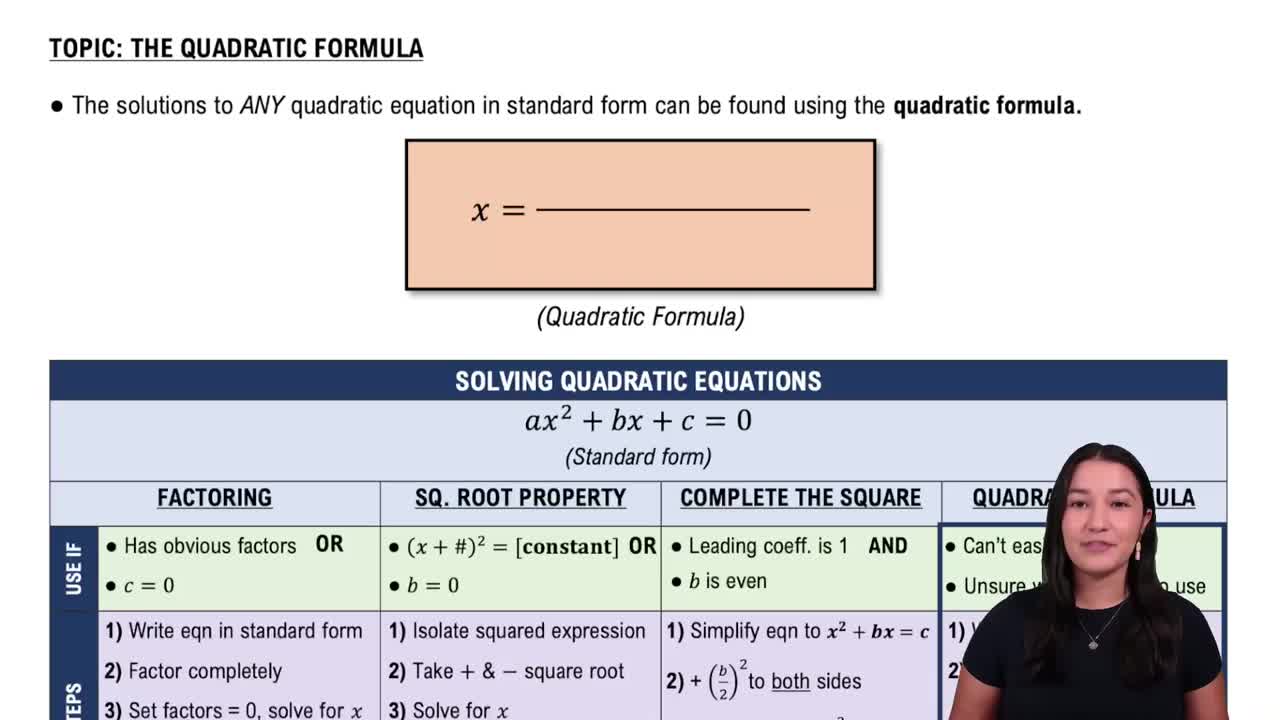Here are the essential concepts you must grasp in order to answer the question correctly.
Quadratic Functions
A quadratic function is a polynomial function of degree two, typically expressed in the form g(x) = ax^2 + bx + c. The graph of a quadratic function is a parabola, which can open upwards or downwards depending on the sign of the coefficient 'a'. In the given function g(x) = (1/2)x^2, the parabola opens upwards since the coefficient is positive.
Recommended video:
Solving Quadratic Equations Using The Quadratic Formula
Graphing Techniques
Graphing a function involves plotting points on a coordinate plane to visualize the relationship between the input (x) and output (g(x)). For quadratic functions, key points include the vertex, axis of symmetry, and intercepts. Understanding how to find these points helps in accurately sketching the graph of the function.
Recommended video:
Graphs and Coordinates - Example
Vertex and Axis of Symmetry
The vertex of a quadratic function is the highest or lowest point on the graph, depending on the direction it opens. The axis of symmetry is a vertical line that passes through the vertex, dividing the parabola into two mirror-image halves. For g(x) = (1/2)x^2, the vertex is at the origin (0,0), and the axis of symmetry is the y-axis (x=0).
Recommended video:



